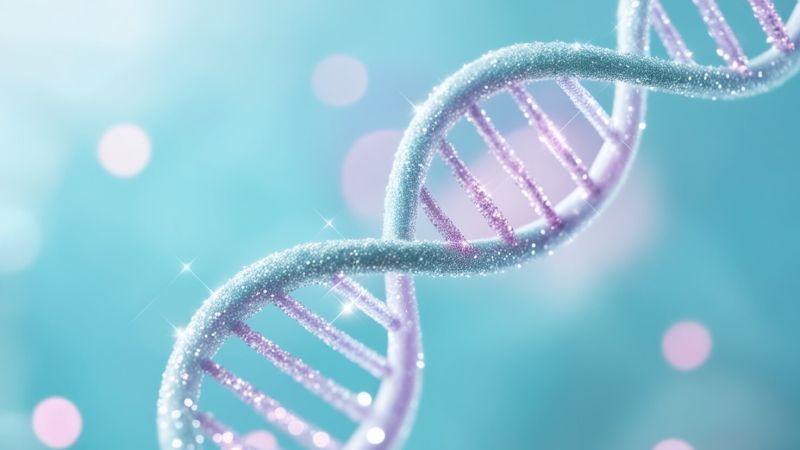
What You Need to Know About Testing NAD Levels
What You Need to Know About Testing NAD Levels
NAD (Nicotinamide adenine dinucleotide) plays a crucial role in many biological processes, and understanding your NAD levels can be key to maintaining optimal health and vitality.
This guide will walk you through everything you need to know about testing NAD levels, from its importance in the body to the steps involved in accurate testing and how to maintain healthy levels.
Key Topics:
- The Importance of NAD in the Human Body: Discover why NAD is essential for energy production, DNA repair, and overall cellular health.
- Biochemical Factors in NAD Testing: Learn about the critical aspect of measuring the NAD+ to NADH ratio in various tissues or biological samples.
- Preparing for a NAD Test: Understand the necessary preparations to ensure accurate test results.
- Understanding the Testing Process: Get a detailed overview of what to expect during the NAD testing procedure.
- Boosting and Maintaining Healthy NAD+ Levels: Explore effective strategies to enhance and sustain optimal NAD+ levels in your body.
- And more.

The Importance of NAD in the Human Body
NAD (Nicotinamide Adenine Dinucleotide) is an essential coenzyme involved in numerous biological processes, including energy metabolism, DNA repair, and gene expression.
It acts as a mediator, facilitating chemical reactions that are vital for maintaining cellular health. NAD also plays a pivotal role in redox reactions, transferring electrons between molecules to generate energy.
One of the key roles of NAD in cellular function is its involvement in energy production. Within the cells, NAD is primarily present in two forms: NAD+ and NADH. NAD+ is the oxidized form, while NADH is the reduced form.
The balance between these two forms is crucial for cellular metabolism and energy production. NAD+ serves as an electron carrier in metabolic pathways, such as glycolysis and the citric acid cycle, aiding in the production of ATP, the cell’s main source of energy.
Moreover, NAD+ is a key regulator of several important enzymes, including sirtuins. Sirtuins play a vital role in cellular processes, such as DNA repair, gene expression, and cell survival. Maintaining optimal NAD+ levels is crucial for maintaining sirtuin activity and promoting healthy cellular function.
The Role of NAD in Cellular Function
Within the complex web of cellular processes, NAD acts as a multifunctional coenzyme, orchestrating various metabolic pathways. For example, NAD participates in the process of glycolysis, where glucose is broken down to produce energy.
NAD acts as an electron acceptor, receiving electrons from glucose and transferring them to other molecules involved in the energy production process.
In addition to its role in glycolysis, NAD is also involved in the citric acid cycle, also known as the Krebs cycle. This cycle takes place in the mitochondria, the cellular organelles responsible for energy production. NAD acts as a coenzyme in several reactions of the citric acid cycle, facilitating the conversion of nutrients into energy-rich molecules such as ATP.
Furthermore, NAD plays a crucial role in DNA repair mechanisms. Your DNA is constantly exposed to various damaging agents, such as radiation and chemicals, so it is prone to errors and breaks. NAD is involved in the repair of DNA damage, ensuring the integrity of your genetic material. This process is essential for maintaining proper cellular function and preventing the development of diseases such as cancer.
NAD and Aging: A Crucial Connection
Learn more about NAD and its benefits for healthy aging in the American Journal of Medical Science and Research1, Volume 6, Issue 5.
As you age, NAD levels naturally decline in the body. This decline has been linked to various age-related diseases, such as neurodegenerative disorders, cardiovascular diseases, and metabolic dysfunction. Studies have suggested that by maintaining healthy NAD levels, it may be possible to slow down the aging process and reduce the risk of age-related diseases.
Additionally, research has indicated that boosting NAD levels can improve mitochondrial function, the cell’s powerhouses responsible for energy production.
Mitochondrial dysfunction is a hallmark of aging and age-related diseases. Enhancing mitochondrial function through NAD supplementation may mitigate age-related decline and improve overall cellular health.
Furthermore, NAD has been shown to regulate the activity of sirtuins, a class of proteins involved in various cellular processes, including aging.
Sirtuins have been implicated in lifespan extension and age-related diseases. By maintaining optimal NAD levels, it may be possible to enhance sirtuin activity and promote healthy aging.

The Science Behind Testing NAD Levels
Accurately testing NAD levels involves a combination of biochemical analysis and technological advancements. Understanding the underlying science is crucial to ensure reliable and informative test results.
When it comes to testing NAD levels, several important aspects must be considered.
One of the key biochemical factors is the measurement of the ratio of NAD+ to NADH in various tissues or biological samples.
This ratio provides valuable information about the cellular redox state and metabolic activity. By accurately determining these ratios, scientists can gain insights into the overall health and functioning of cells.
To measure the NAD+ to NADH ratio, various biochemical assays are employed. One commonly used method is enzymatic cycling assays, which involve a series of enzymatic reactions that amplify the signal and allow for precise quantification of NAD+ and NADH levels.
Another technique is high-performance liquid chromatography (HPLC), which separates and analyzes the different forms of NAD, providing detailed information about their distribution and concentration.
The Biochemical Basis of NAD Testing
The biochemical basis of NAD testing goes beyond just measuring the ratio of NAD+ to NADH. It also involves understanding the role of NAD in cellular processes.
NAD is a coenzyme that plays a critical role in various metabolic pathways, including glycolysis, the tricarboxylic acid cycle, and oxidative phosphorylation. By testing NAD levels, scientists can gain insights into the efficiency of these metabolic pathways and identify any potential dysregulation or dysfunction.
Furthermore, NAD is involved in numerous cellular processes beyond metabolism. It serves as a substrate for enzymes called sirtuins, which play a crucial role in regulating gene expression, DNA repair, and aging.
By testing NAD levels, researchers can assess the activity of sirtuins and gain insights into overall cellular health and longevity.
The Technological Advances in NAD Testing
Technological advancements have revolutionized the field of NAD testing, providing researchers with innovative methods to explore and understand NAD levels.
One significant advancement is the development of non-invasive techniques that allow for real-time monitoring of NAD levels within living cells or tissues.
Spectroscopy is one such non-invasive technique that has been widely used in NAD testing. It involves the measurement of light absorption or emission by NAD molecules, providing valuable information about their concentration and distribution.
Fluorescence imaging is another powerful tool that enables researchers to visualize NAD levels in real-time, offering a dynamic view of cellular responses and metabolic activity.
These technological advances not only improve the accuracy and precision of NAD testing but also provide valuable insights into cellular responses and dynamics.
By combining biochemical analysis with cutting-edge technologies, scientists can unravel the intricate mechanisms underlying NAD metabolism and its impact on overall cellular health.

Steps to Accurately Test NAD+ Levels
If you are interested in testing your NAD levels, it is important to follow the proper steps to ensure accurate and reliable results. Here is a step-by-step guide to help you through the testing process:
Preparing for a NAD Test
- Consult a healthcare professional: Before undergoing NAD testing, it is advisable to consult a healthcare professional who is knowledgeable about this specific testing and its implications. They can provide you with valuable information and guidance tailored to your individual needs.
- Fasting: Some NAD testing methods may require fasting for a certain period before the test. This is done to ensure that the results are not affected by recent food intake. Follow the specific fasting instructions provided by the testing facility or healthcare professional. It is important to adhere to these instructions strictly to obtain accurate results.
- Medication and Supplements: Inform your healthcare professional about any medications or supplements you are currently taking. Certain substances can affect NAD levels or interfere with the testing process. Your healthcare professional will advise you on whether you need to temporarily discontinue any medications or supplements before the test.
By following these preparatory steps, you can ensure that your NAD test results are as accurate and reliable as possible.
Understanding the Testing Process
Once you are prepared for the NAD test, you will typically go through the following steps:
- Biological sample collection: The healthcare professional will collect a sample of your blood, urine, or tissue depending on the specific testing method. This sample will be used to measure your NAD levels accurately. The collection process is usually quick and straightforward, and healthcare professionals are trained to perform it with minimal discomfort.
- Biochemical analysis: The collected sample will undergo a series of biochemical analyses to measure the NAD+ to NADH ratio accurately. These analyses involve sophisticated laboratory techniques and equipment, ensuring precise measurements. The biochemical analysis is a crucial step in determining your NAD levels and providing valuable insights into your cellular health.
- Data interpretation: The test results will be analyzed and interpreted by experts, taking into account various factors such as age, gender, and health condition. This interpretation is essential for understanding the significance of your NAD levels and how they relate to your overall well-being. The experts will consider your circumstances and provide you with personalized insights based on the test results.
Through this comprehensive testing process, you can gain valuable information about your NAD levels and their implications for your health.
Interpreting NAD Test Results
Once the results are available, the healthcare professional will explain and interpret the findings. They will discuss the implications of your NAD levels and help you understand how they relate to your overall cellular health and potential risk for age-related diseases.
It is important to note that NAD levels can vary among individuals depending on various factors, and an expert’s interpretation is vital for accurate understanding.
During the interpretation of your NAD test results, the healthcare professional may also provide recommendations for lifestyle changes or interventions that can help optimize your NAD levels.
These recommendations may include dietary modifications, exercise routines2, or specific supplements that can support your cellular health and well-being.
Remember that NAD testing is just one tool in assessing your overall health and should be considered alongside other diagnostic tests and medical evaluations.
By working closely with your doctor, you can gain a deeper understanding of your NAD levels and take proactive steps toward optimizing your cellular health.
Factors Affecting NAD Levels
Several factors can impact NAD levels in the body. Understanding these factors can provide insights into maintaining optimal NAD levels and promoting cellular health.

Lifestyle Factors and NAD Levels
Various lifestyle factors, such as diet, exercise, and stress, can influence NAD levels. Consuming a nutrient-rich diet, engaging in regular physical activity, and managing stress effectively has been shown to support healthy NAD levels. On the other hand, poor dietary choices, a sedentary lifestyle, and chronic stress may deplete NAD levels, contributing to cellular dysfunction.
Health Conditions That Impact NAD Levels
Certain health conditions and diseases can affect NAD levels in the body. Chronic inflammation, metabolic disorders, and mitochondrial dysfunction have been associated with NAD depletion. Understanding the impact of these health conditions on NAD levels can help develop targeted therapies and interventions to restore optimal cellular function.
Boosting and Maintaining Healthy NAD+ Levels
There are various approaches to boost and maintain healthy NAD levels in the body. These strategies focus on lifestyle modifications and targeted interventions.
Dietary Approaches to Increase NAD
Eating a diet rich in NAD precursors, such as niacin or tryptophan, can support NAD synthesis. Foods like fish, poultry, nuts, and legumes are good sources of these NAD precursors. Additionally, including foods rich in antioxidants3, such as berries and leafy greens, can protect NAD from degradation and support cellular health.
Supplements and NAD Levels
Supplementing with NAD precursors, such as nicotinamide riboside (NR) or NAD+ precursor, can increase NAD levels effectively. These supplements are readily available and have shown promising results in boosting NAD levels. However, it is essential to consult with a healthcare professional before starting any supplements to ensure safety and efficacy.
Exercise and NAD Levels
Regular physical activity has been shown to increase NAD levels in the body. Engaging in aerobic exercises, strength training, or high-intensity interval training (HIIT) can stimulate NAD production and enhance mitochondrial function. Incorporating exercise into your routine not only promotes NAD levels but also supports overall health and well-being.
Conclusion
In conclusion, accurately testing NAD levels is crucial for understanding cellular health and assessing potential risk for age-related diseases. By understanding the science behind NAD testing, following the proper steps, and considering lifestyle factors, individuals can take proactive steps to optimize their NAD levels and promote healthy aging. Are you deficient in NAD? Take this simple test to find out.
Lastly, if you’re interested in going deeper into health-related content, here are a few of our recent posts that you may want to read:
- 9 Powerful Benefits of Optimizing Your NAD
- Why Muscle Is Your Biggest Alley in the Anti-Aging Strategy
- The 24 Hottest Biohacking Trends in 2024
- NAD Optimization: Real People, Real Results
Referenced Sources:
Read More














